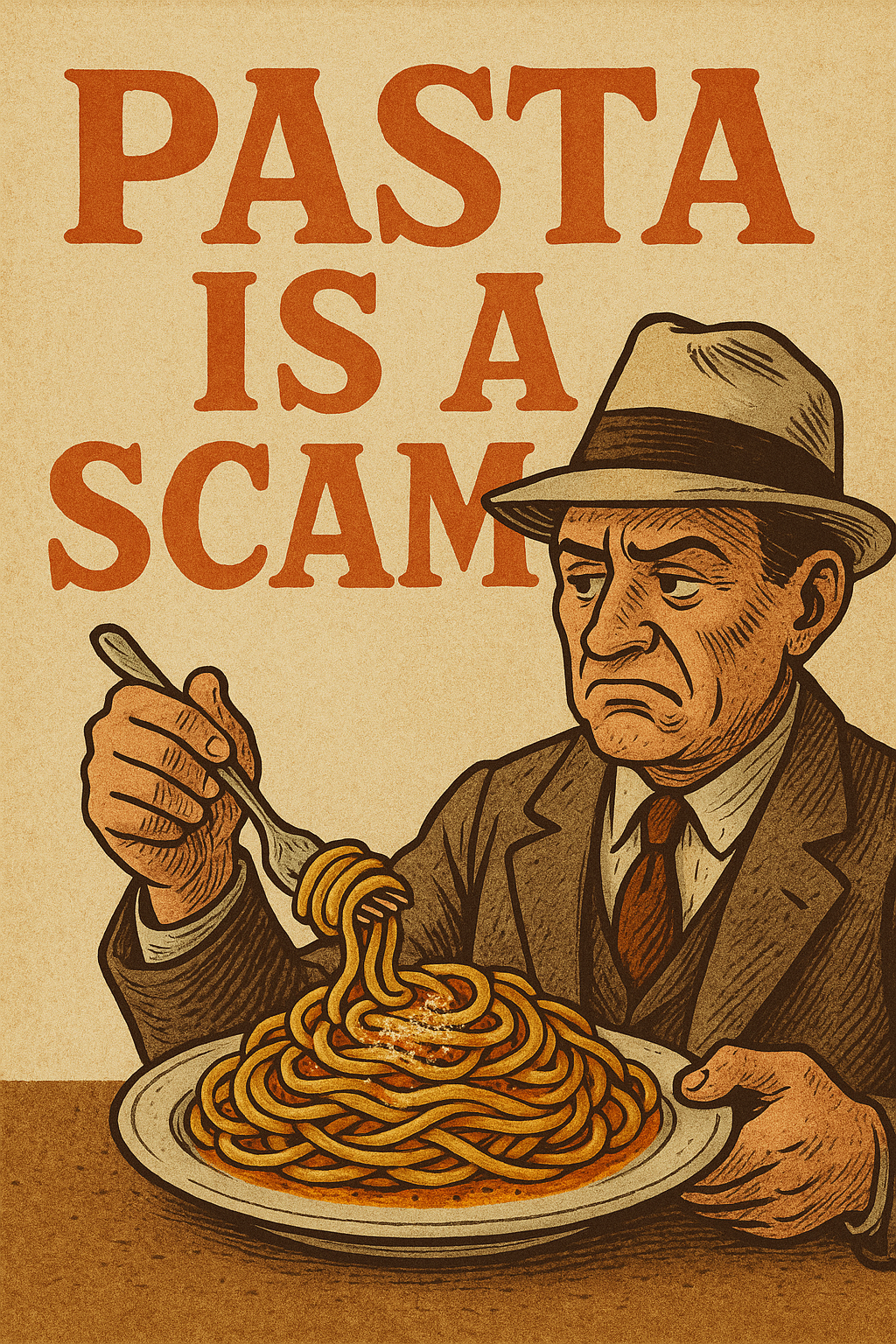Pasta is a Scam

It’s flour and water. Why does it cost $38?
There are two kinds of people who order the pasta: those who know exactly what they’re getting, and those who are about to find out.
Because here’s the thing: pasta is cheap. Not just inexpensive — but fundamentally inexpensive. Even the good stuff. Even the handmade stuff. Even the “48-yolk tortellini in brodo” that gets its own spotlight and a tableside pour.
Flour and water. Maybe egg. Maybe a little semolina. That’s it. You can feed six people for under five dollars, and that’s if you’re using good eggs.
But put it on a white plate, say a few Italian words, and charge $34 to $42 — and no one flinches.
The margins on pasta are restaurant legend. It costs less than a dinner roll to make, but you can sell it at main-course prices. That’s not inherently a bad thing — restaurants need profit. But pasta has become the quiet cash cow of the upscale menu, and almost no one talks about it.
It’s especially powerful because it feels like comfort. Pasta seems generous. It fills the plate. It fills you. It’s rarely confrontational. It’s the soft landing on a menu full of things that might otherwise feel overly engineered — “compressed melon,” “smoked duck heart,” “powdered yolk.” Pasta grounds a place. It says: We cook here, too.
But a lot of the time, it’s a trick. A story dressed up in pecorino.
The pasta might be made in-house — or it might not. (Some kitchens get theirs delivered daily, frozen, and say nothing.) The sauce might be “anchovy-forward” or “cured lemon emulsion,” but it’s usually a quick toss in a hot pan. And plating it beautifully doesn’t change the fact that you’re paying nearly fifty dollars for about 130 grams of starch.
The more rustic it sounds, the higher the price. Pici cacio e pepe. Casarecce pomodoro. Tagliolini aglio e olio. If you wrote “long hand-rolled noodles with black pepper and cheese” or “short pasta with tomato sauce,” would it still cost more than the hanger steak?
There are, of course, exceptions. Some chefs really do treat pasta like sculpture. Some sauces take days. Some fillings are seasoned better than entire entrées. But they’re the minority. Most of the time, you're paying for the idea of pasta, not the execution.
It’s a clever play: pasta reads as both humble and refined. The dish might be $38, but it still feels like you made the “unpretentious” choice. You skipped the big protein. You’re here for flavor. But you still walked into the markup trap.
Pasta is the Trojan horse of fine dining. A soft shape that sneaks a tidy little profit through the gates. And you thank them for it.
